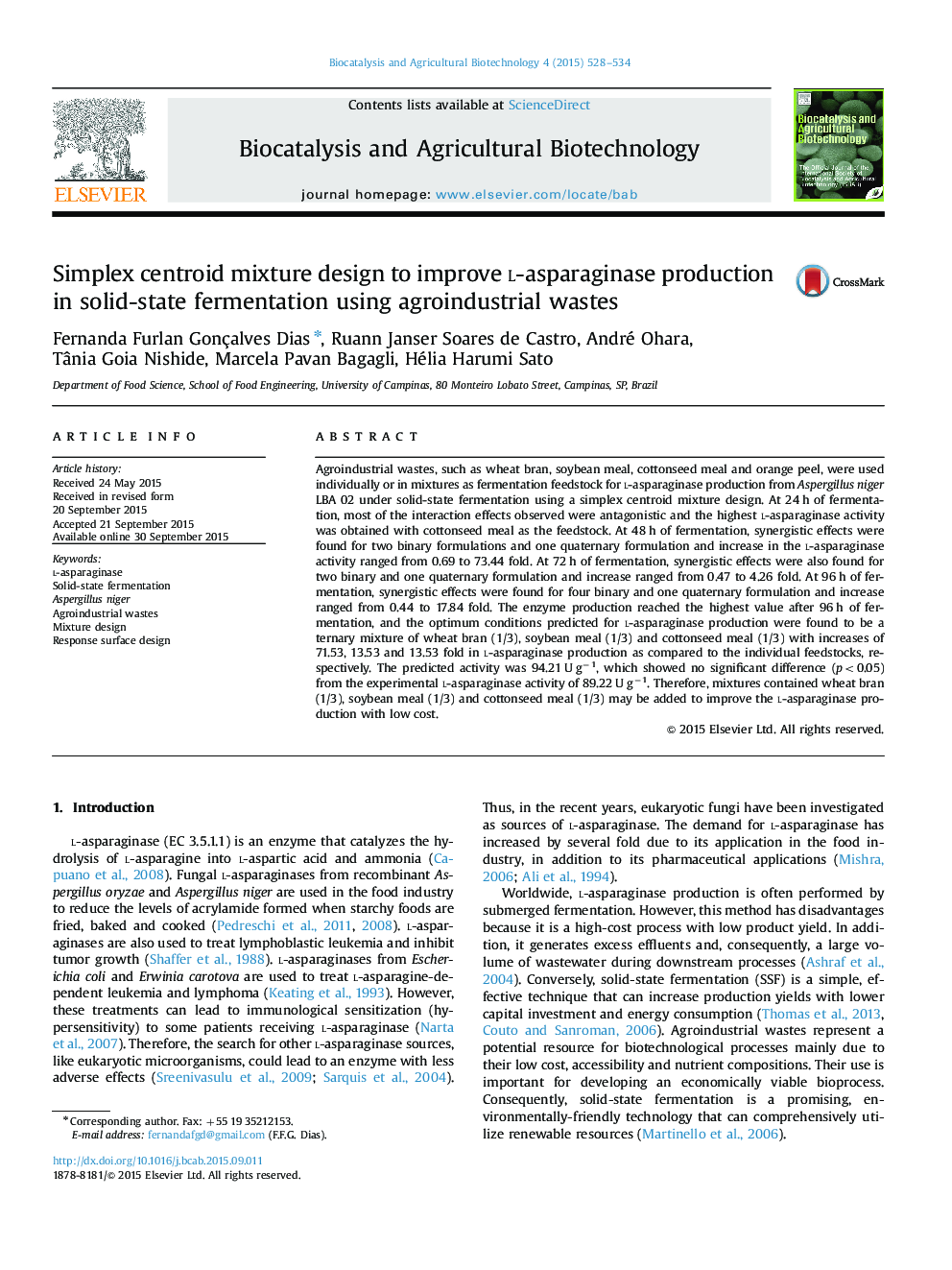| Article ID | Journal | Published Year | Pages | File Type |
|---|---|---|---|---|
| 2075303 | Biocatalysis and Agricultural Biotechnology | 2015 | 7 Pages |
Abstract
Agroindustrial wastes, such as wheat bran, soybean meal, cottonseed meal and orange peel, were used individually or in mixtures as fermentation feedstock for l-asparaginase production from Aspergillus niger LBA 02 under solid-state fermentation using a simplex centroid mixture design. At 24 h of fermentation, most of the interaction effects observed were antagonistic and the highest l-asparaginase activity was obtained with cottonseed meal as the feedstock. At 48 h of fermentation, synergistic effects were found for two binary formulations and one quaternary formulation and increase in the l-asparaginase activity ranged from 0.69 to 73.44 fold. At 72 h of fermentation, synergistic effects were also found for two binary and one quaternary formulation and increase ranged from 0.47 to 4.26 fold. At 96 h of fermentation, synergistic effects were found for four binary and one quaternary formulation and increase ranged from 0.44 to 17.84 fold. The enzyme production reached the highest value after 96 h of fermentation, and the optimum conditions predicted for l-asparaginase production were found to be a ternary mixture of wheat bran (1/3), soybean meal (1/3) and cottonseed meal (1/3) with increases of 71.53, 13.53 and 13.53 fold in l-asparaginase production as compared to the individual feedstocks, respectively. The predicted activity was 94.21 U gâ1, which showed no significant difference (p<0.05) from the experimental l-asparaginase activity of 89.22 U gâ1. Therefore, mixtures contained wheat bran (1/3), soybean meal (1/3) and cottonseed meal (1/3) may be added to improve the l-asparaginase production with low cost.
Keywords
Related Topics
Life Sciences
Agricultural and Biological Sciences
Agricultural and Biological Sciences (General)
Authors
Fernanda Furlan Gonçalves Dias, Ruann Janser Soares de Castro, André Ohara, Tânia Goia Nishide, Marcela Pavan Bagagli, Hélia Harumi Sato,
